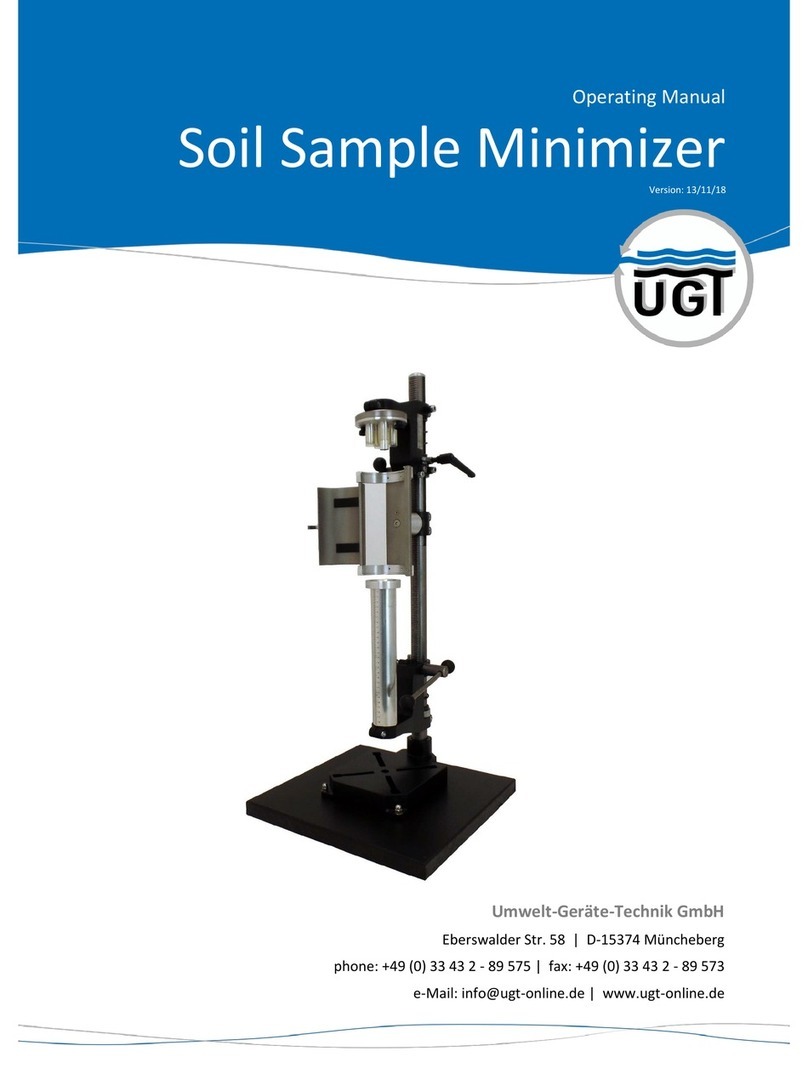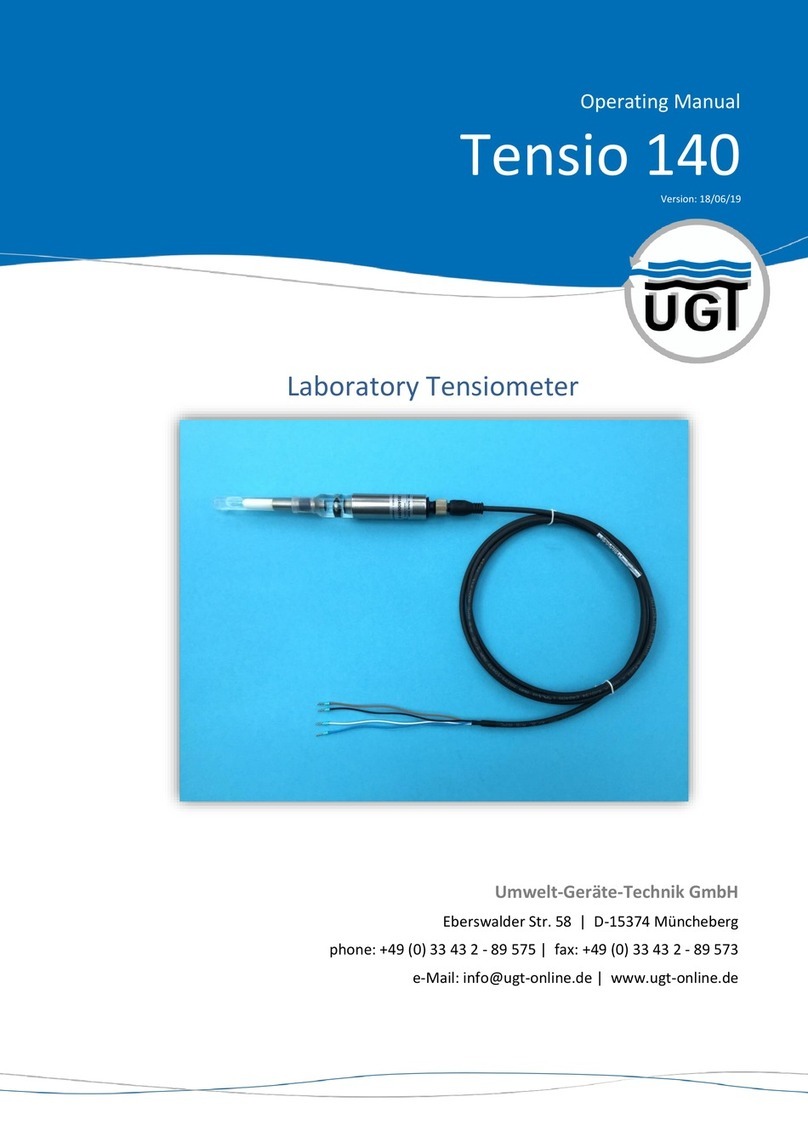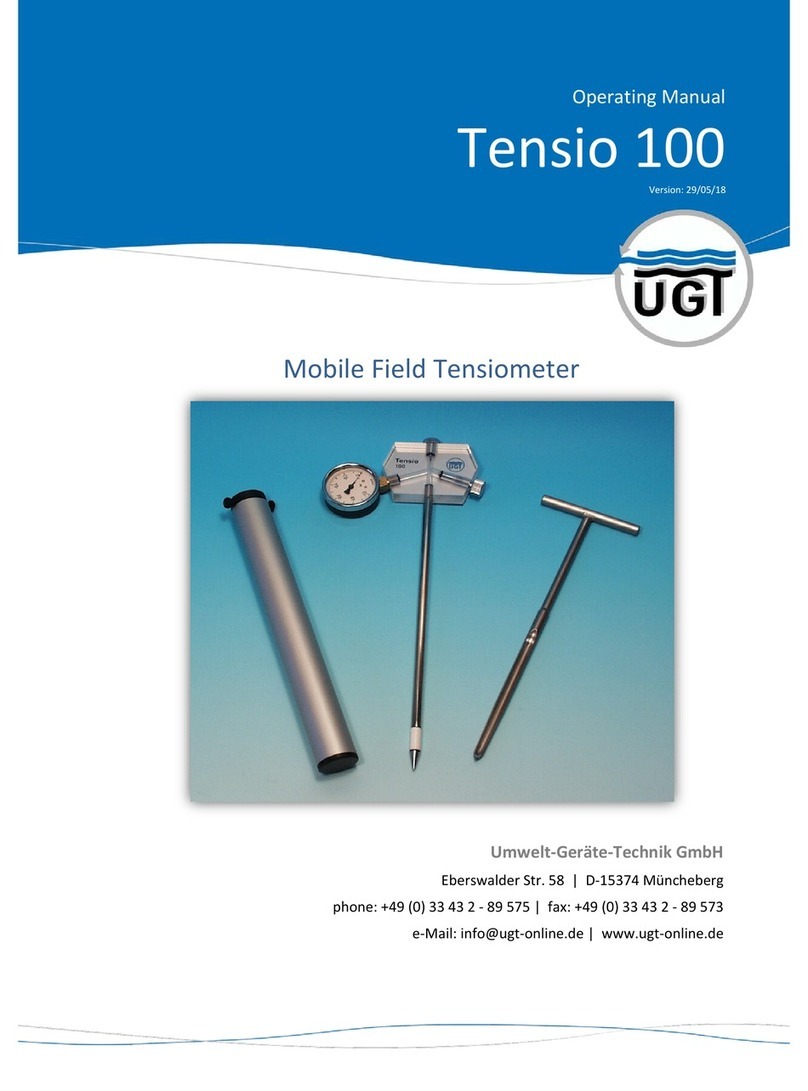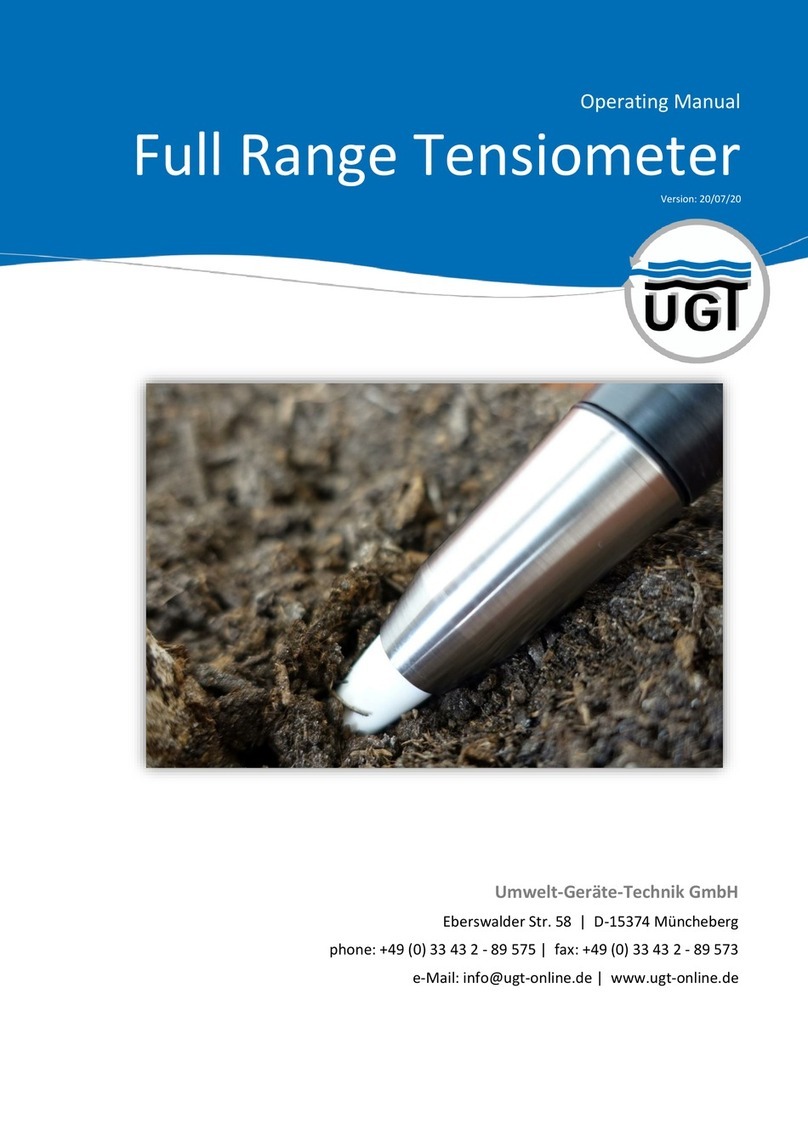
Umwelt-Geräte-Technik GmbH | Eberswalder Str. 58 | D-15374 Müncheberg | Tel.: +49 (0) 33 43 2 - 89 575 | www.ugt-online.de Page 2 of 32
Content
1. Introduction ......................................................................................................................... 3
1.1 Scope of supply ....................................................................................................................... 4
2. Introduction ......................................................................................................................... 6
3. Underlying theoretical principles........................................................................................... 7
4. Methodology of the experimetal procedure .......................................................................... 8
4.1 Infiltration tests with different water tensions....................................................................... 8
4.2 Infiltration tests with identical water tensions ....................................................................... 9
5. Technical Parameters, Set Up and Operation ...................................................................... 10
5.1 Technical Specifications......................................................................................................... 10
5.2 Assembly and operation of the Hood Infiltrometer.............................................................. 10
6. Test procedure.................................................................................................................... 12
6.1 Preparation of the Hood Infiltrometer.................................................................................. 12
6.2 Setting up the Hood Infiltrometer......................................................................................... 12
6.3 Filling the hood...................................................................................................................... 13
6.4 Choosing the effective water tension ................................................................................... 13
6.5 Measuring the infiltration rate.............................................................................................. 14
6.6 Bubble point (BP) of the soil.................................................................................................. 14
6.7 Soil Tensiometer.................................................................................................................... 15
7. Infiltration Measurement with the tension infiltrometer...................................................... 15
8. Calculation of hydraulic conductivity ................................................................................... 16
9. Micrologger IL-2700 ............................................................................................................ 17
9.1 Features................................................................................................................................. 17
9.2 Technical Data ....................................................................................................................... 17
9.3 General guidelines for operation .......................................................................................... 18
9.4 Measurement ........................................................................................................................ 19
9.5 Remarks for the configuration of a measurement ................................................................ 19
9.6 Calibration ............................................................................................................................. 20
9.7 Configuring the measurement interval /Starting a measurement........................................ 20
9.8 Options menu........................................................................................................................ 21
9.9 Menu structure...................................................................................................................... 21
10. Software IL2700 GUI........................................................................................................ 27
10.1 Reading out Data................................................................................................................... 28
11. Notes.............................................................................................................................. 31
12. References ...................................................................................................................... 32































